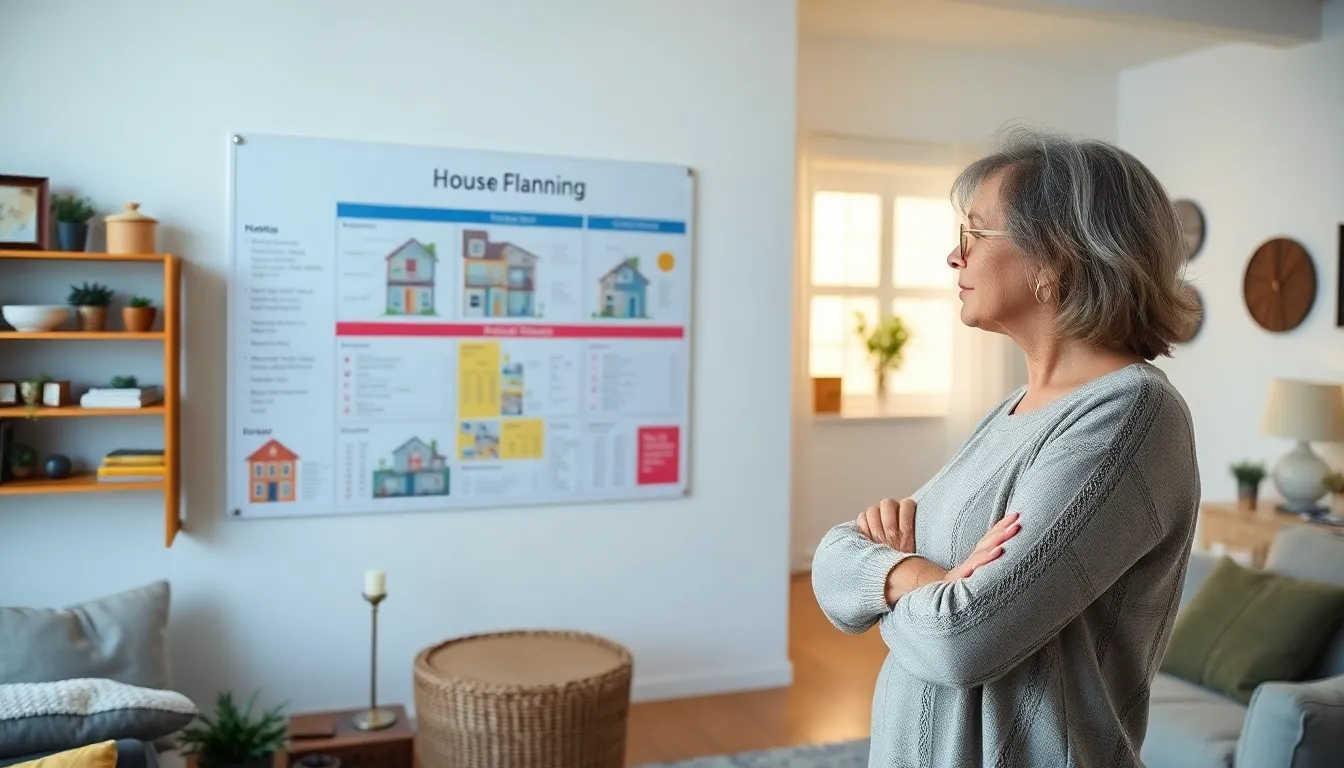As retirement approaches, many find themselves facing an unexpected dilemma: the family home that once felt cozy now seems more like a sprawling museum of memories. Downsizing isn’t just about trading square footage for a more manageable space; it’s about embracing freedom and simplicity. Imagine swapping that never-ending yard work for leisurely strolls in the park or finally having room for that dream hobby you’ve put off for years.
Table of Contents
ToggleUnderstanding Why Downsizing Is Necessary
Downsizing offers more than just reduced square footage. It addresses both financial and lifestyle considerations that resonate deeply during retirement.
Financial Benefits
Lowering housing costs can significantly ease the financial burden. Reduced mortgage payments lead to more disposable income for travel or leisure activities. Selling a large home often results in cash influx, allowing for investments or other expenses. Property taxes also decrease when moving to a smaller space. Increased savings enhance security and provide flexibility for unexpected expenses.
Lifestyle Improvements
Simpler living enhances daily routines and promotes well-being. Decluttering creates space for meaningful activities and hobbies. Smaller homes often require less upkeep, freeing time for leisure and family. Reduced maintenance responsibilities lead to decreased stress. Embracing a new neighborhood can foster connections and community engagement. Prioritizing comfort and convenience leads to a more fulfilling retirement experience.
Preparing for the Downsizing Process

Preparing for the downsizing process involves thoughtful consideration and planning. This section outlines important steps to smooth the transition.
Assessing Your Current Home
Assess the current home’s size and features. Identify which areas require maintenance and what improvements enhance livability. Consider the emotional attachment to spaces, as letting go can be challenging. Evaluate the layout and whether it supports aging in place. A property with fewer steps or a single level often accommodates future needs. Gather insights into the neighborhood’s amenities and availability of social activities. Recognize the opportunity to sell the property in a strong market, maximizing financial gain.
Setting a Budget
Set a budget for the downsizing process early on. Consider costs associated with selling the current home and purchasing a new one, including agent fees and inspections. Determine which expenses arise from renovations or improvements to the new space. Factor in moving expenses, such as hiring movers or renting trucks. Include ongoing costs for the new home, like property taxes and maintenance, to ensure the financial plan remains viable. Analyze how the downsized choice aligns with overall retirement goals and lifestyle adjustments.
Decluttering Your Belongings
Decluttering plays a vital role in the downsizing process. Removing unnecessary items creates space and reduces stress, making the transition smoother.
Steps to Declutter Effectively
- Start with one room at a time. Focusing on a single area simplifies the task.
- Set a timeline. Allocating specific days for decluttering maintains momentum.
- Categorize belongings into keep, donate, sell, and discard. This organization streamlines decisions.
- Establish a system for sorting items. Utilize boxes for different categories to promote efficiency.
- Revisit items after a week. Reflecting on what remains can help solidify decisions.
Tips for Sorting Items
- Ask if each item adds value. Consider whether it contributes joy or functionality.
- Use the one-year rule. If an item hasn’t been used in the past year, it likely isn’t needed.
- Involve family members. Collaborating can offer fresh perspectives and shared responsibility.
- Take photographs of sentimental items. This allows for memories without physical clutter.
- Create a donation plan. Identify local charities and schedule pickups, ensuring a quick turnaround.
Finding the Right New Home
Finding the right new home plays a critical role in the downsizing journey. This decision impacts both financial health and daily life.
Key Features to Consider
Prioritize accessibility when evaluating new homes. Single-story layouts often reduce mobility concerns. Look for amenities that cater to an active lifestyle, such as nearby parks or recreational facilities. Energy efficiency features can minimize utility costs, contributing to long-term savings. Safety elements, such as handrails and non-slip flooring, enhance comfort. Additionally, consider space for guests, particularly if family visits regularly.
Researching Potential Locations
Investigate neighborhoods that align with retirement goals. Evaluate proximity to healthcare facilities, as easy access to medical services becomes increasingly important. Analyze local social activities, such as community centers or clubs, to foster engagement. Review crime rates and available public transport options for convenience. Assess affordability, keeping in mind budget constraints and property taxes. Explore local amenities, including grocery stores, restaurants, and entertainment venues, ensuring a fulfilling lifestyle post-retirement.
Moving and Transitioning
Moving to a new home during retirement can enhance the downsizing experience. Professional movers can simplify the process and alleviate stress.
Hiring Professional Movers
Hiring trained experts ensures the safe transport of valuables. They’ll handle heavy lifting and packing, significantly reducing the risk of damage. It’s advisable to obtain multiple quotes to find competitive pricing and services tailored to specific needs. Researching reviews can help identify reputable companies. Many individuals benefit from the convenience of full-service options, which include packing, loading, and unpacking. Scheduling in advance often leads to better availability and can secure lower rates.
Organizing Your Move
Organizing a move requires strategic planning to ensure efficiency. Creating a detailed timeline helps prioritize tasks before the moving day. Clear labeling of boxes by room or category enhances unpacking significantly. Utilizing inventory lists can assist in keeping track of personal belongings. It is beneficial to designate a small area for essential items, which allows easy access right after the move. Engaging family or friends during the moving process often makes activities more enjoyable and less stressful. Staying focused on one task at a time leads to a smoother transition into the new home.
Downsizing for retirement is more than just a practical move; it’s a transformative journey toward a more fulfilling life. By letting go of unnecessary possessions and embracing a simpler lifestyle, individuals can reclaim their time and energy for what truly matters. This process not only eases financial burdens but also opens doors to new experiences and communities.
With careful planning and thoughtful decision-making, the transition can be smooth and rewarding. The right home can enhance daily living and support an active lifestyle. Ultimately, downsizing is a powerful step toward enjoying a stress-free retirement filled with opportunities for growth and joy.



